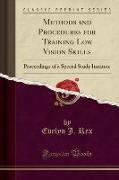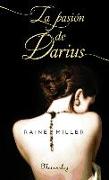Methods and Procedures for Training Low Vision Skills
BücherAngebote / Angebote:
Excerpt from Methods and Procedures for Training Low Vision Skills: Proceedings of a Special Study Institute
The utilization of remaining vision is not a new concept to educators of the visually handicapped. Those educators who were instrumental in changing the names and practices of programs once known as sight saving classes or sight conservation classes were certainly aware of the importance of utilizing residual vision. Establish ment of classes for the partially seeing was an early attempt on the part of teachers of the visually handicapped to guide children in their use of remaining vision. They were aided by other professionals ophthalmologists, optometrists, lighting engineers, biologists. It has now been accepted generally that visually handicapped children should make use of whatever amount of residual vision is available to them. The importance of guiding children in their use of remaining vision has become a philosophical tenet in the education of children classified as partially seeing and, in the case of most educators, philosophy has become practice.
A 1961 study by John W. Jones of the United States Office of Education revealed the large numbers of children classified as blind who were also using residual vision. Of children with visual acuity, 50 per cent were print readers. Of children with notations of such meager visual acuity as CF (counts Fingers), as many as 25 per cent were reading print.
The Jones study provided the field with several new concepts. Educators began to place less emphasis on visual acuity and became concerned with visual efficiency. The classification of blind and partially seeing as de fined by visual acuity measures became ineffective and the dichotomy for classification became one of reading medium, print or braille. Even this second dichotomy has limitations for some children read both print and braille. The Jones study also provided the term visually handi capped for the classification of children with visual impairment severe enough to warrant special educational provisions.
Again, the role of Ophthalmologists, Optometrists and others must be recognized. Their contributions in the area of low vision aids have provided visually handi capped children with the means for both increased acuity and efficiency.
About the Publisher
Forgotten Books publishes hundreds of thousands of rare and classic books. Find more at www.forgottenbooks.com
This book is a reproduction of an important historical work. Forgotten Books uses state-of-the-art technology to digitally reconstruct the work, preserving the original format whilst repairing imperfections present in the aged copy. In rare cases, an imperfection in the original, such as a blemish or missing page, may be replicated in our edition. We do, however, repair the vast majority of imperfections successfully, any imperfections that remain are intentionally left to preserve the state of such historical works.
Folgt in ca. 5 Arbeitstagen




